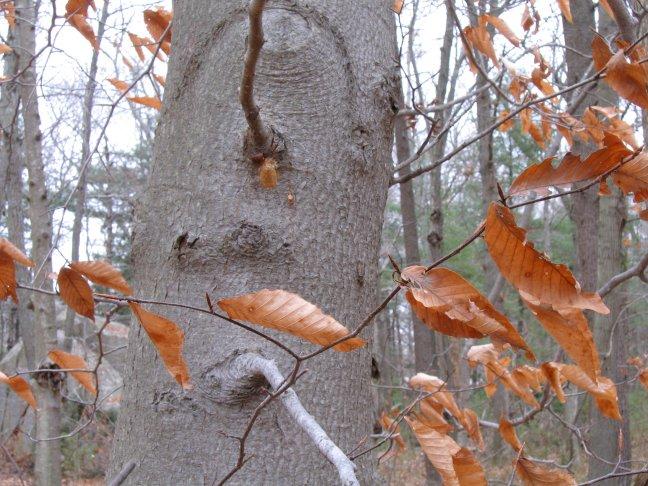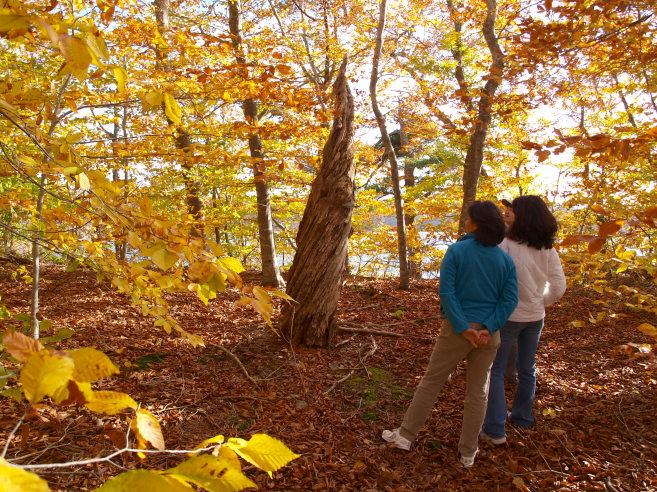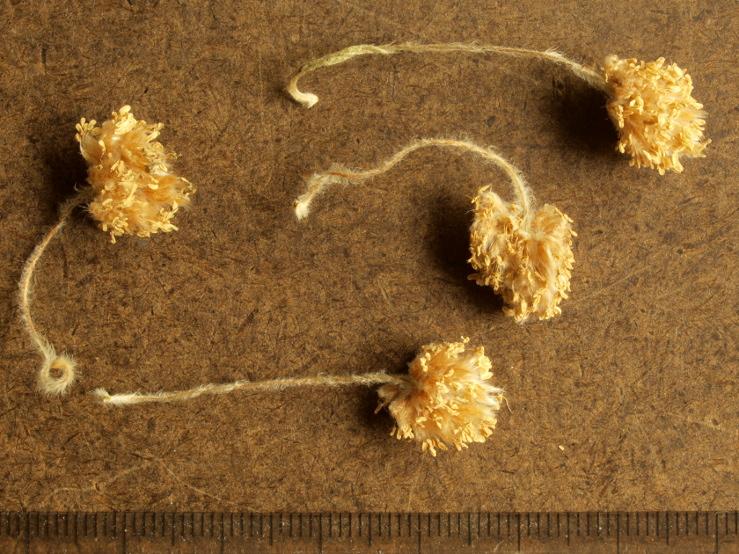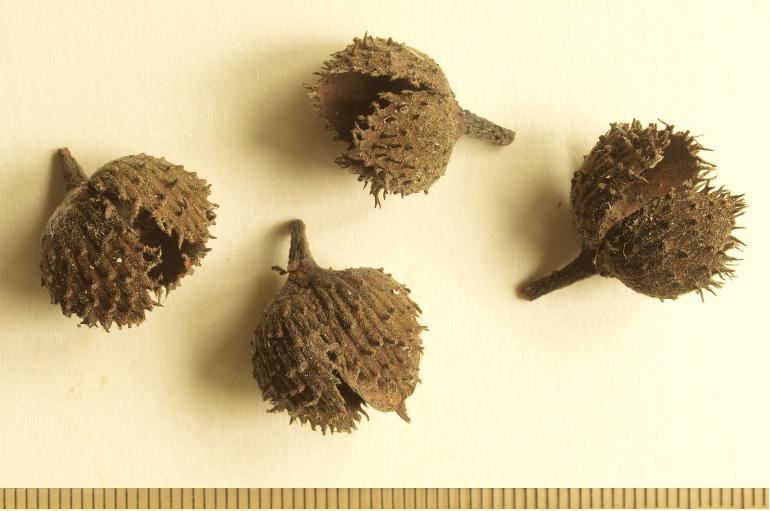American Beech
Fagus grandifolia
The beech's thin, smooth, light gray bark is distinctive, as are the long, slender, pale chestnut-brown buds readily visible
during the winter. Its root system shallow and widely spreading, beech often forms thickets or colonies by suckering from
roots of the central oldest tree. When shaded in a forest stand, it forms a long, straight, massive trunk that rises up into
a small, dense crown (that's how it grows in Alper Preserve). Ovate to elliptic dark green leaves have coarse, widely spaced
marginal teeth and prominent parallel veins, each vein ending at the tip of a marginal tooth. Foliage turns golden bronze
in fall. American beech is winter deciduous. Its dry leaves often remain on branches until new foliage is ready to emerge
in spring. Flowering takes place simultaneously with unrolling of leaves. Inflorescences are unisexual, both sexes found on
the same tree. Female flowers give way to pairs of triangular nuts enclosed in spiny bracts. Beech nuts are edible. Birds
and mammals, including deer, bear, squirrel, grouse, and turkey, feed on the nuts. Hollows in beech trees provide shelter
for many animals. The slow-growing, tough, strong wood is used for flooring, furniture, and wooden ware. Because of its thin
bark and shallow root system, American beech is very susceptible to damage from forest fires. That's why beeches are uncommon
in the fire-prone pine barrens zone. Older trees are often damaged and weakened by fungal infestations.

Beech: bark, exquisite buds, and overwintering dry leaves. December 31

An old snag that gave birth to a beech grove, Halfway Pond Island, Plymouth

Beech male (staminate) flowers, mid-May

Empty bracts collected in May (nuts taken by animals)